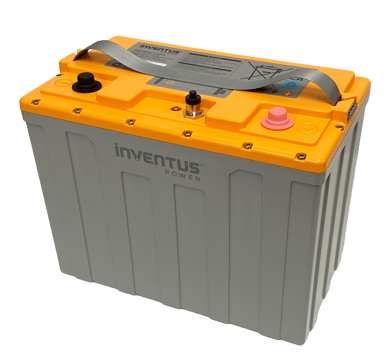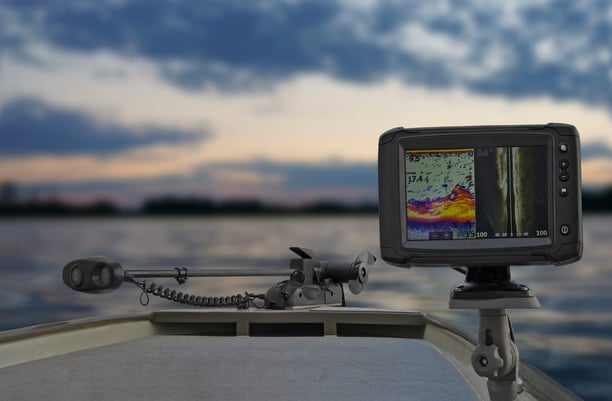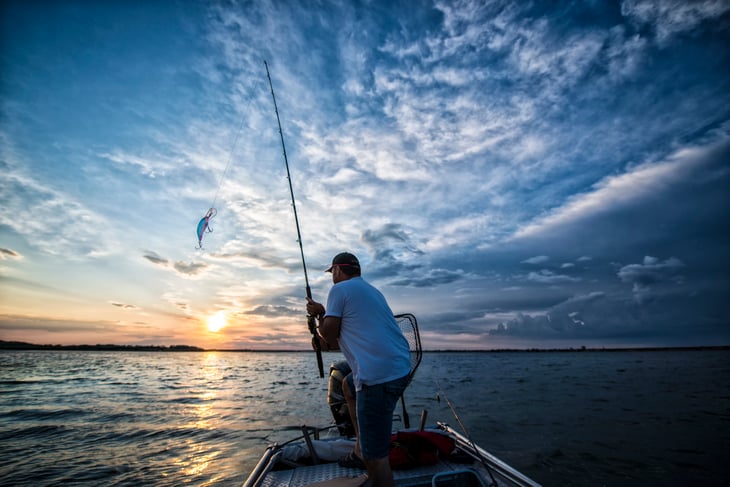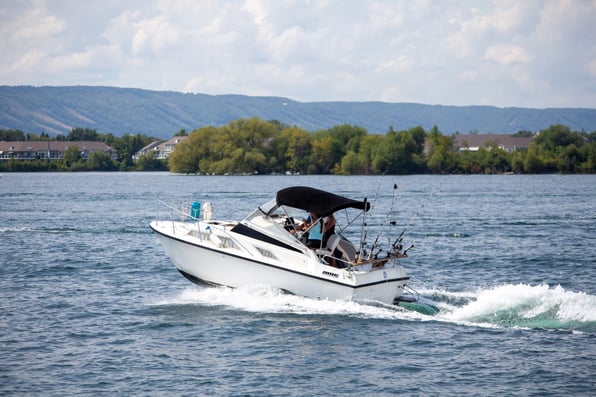Batteries are no strangers to those in the boating world. Typical recreational boating applications require one battery to start the boat engine and another battery to run the trolling motor and electronic accessories. These batteries have traditionally been lead-acid, but due to the increasing demand for onboard "power-hungry" systems and the drive for an overall better experience on the water, boaters are seeking out a more robust and reliable battery source. As the benefits of lithium-ion (Li-ion) battery technology have become more widely known within the marine and boating industry, boaters are finding Li-ion batteries to be a viable solution. In the following, we’ll look at why lithium-ion is poised to become the marine battery of choice for boaters.
Lithium-ion vs. lead-acid in marine applications
Traditional lead-acid batteries are the incumbent power source for marine equipment and have been used in boating applications such as starting the motor, powering the trolling motor, and running boating accessories like depth finders, fish-finders, and GPS devices. However, despite their prevalence, lead-acid batteries have several drawbacks in marine applications, which is opening doors for lithium-ion technology. Let’s take a look at the benefits of Li-ion marine batteries versus lead-acid.
Better performance
Lithium-ion offers greater usable capacity at 80-100% Depth of Discharge (DoD) and the ability to provide more consistent power as opposed to lead-acid which typically provides only 50-70% DoD and experiences voltage drops when running high loads.
Less weight
Heavy boats hinder performance, which is why conserving weight is always a priority. Lithium-ion batteries weigh 40% less than lead-acid batteries to improve efficiency and speed when needed most for competitive fishing. Additionally, smaller and lighter Li-ion batteries, create room for more fish storage and longer sessions out on the water.
Faster charging time
Lead-acid batteries may need up to 14 hours on the charger, while Li-ion can be fully charged in less than 2-3 hours. If a fisherman forgets to plug in their lead-acid battery the night before, then they won’t be able to fish that day. The quick-charging benefits of Li-ion are very useful to boaters, allowing them to get back on the water with little waiting.
Off-season storage
Traditional lead-acid batteries require winter maintenance to avoid damaging the battery. That’s because the discharge rate in lead-acid batteries often results in total depletion, causing separation of the acid and water in the unit. When exposed to frigid temperatures, the freezing cycle can cause the water to freeze and crack the battery. For that reason, the lead-acid battery requires regular trickle charges.
However, lithium-ion batteries will self-discharge at a much slower rate than lead-acid batteries, allowing for maintenance-free storage in the off-season when properly charged before storage. Li-ion is also more tolerant of extreme temperatures whether being used or stored in hot or cold environments. That means they’re ready to hit the water after several months of hiatus. The equipment will hold its charge and be ready for action and you won’t have to purchase a new battery at the beginning of every new boating or fishing season.
Lithium solutions in the market today
In addition to all the key benefits of lithium-ion over lead acid batteries, here are a few considerations in determining what’s the best lithium-ion solution for your boat.
Plug-and-play simplicity
Most lithium batteries for marine applications come in either a Group 27 or 31 size battery and are designed as a drop-in lead acid replacement, making them a simple plug-and-play solution. However, the drawback is they are generally designed for either high cranking to start the main motor or deep cycle for running the trolling motors. Furthermore, they are not optimized to work with the entire marine ecosystem, which includes the charger, controller, communication, GPS, etc.
Marine cranking power
Many 12V Li-ion batteries on the market can only provide 200-300 amps of peak power, and even less at cold temperatures, which is not sufficient to turn over motors. Boaters with inadequate batteries have a reasonable fear that they will be out on the water, and their motor will not turn over, leaving them stranded. Therefore, it is critical to select the appropriate Li-ion battery that can truly support the Marine Pulse Cranking Amps desired to start your motor, even in cold temperatures when you need it most.

Why choose PROTRXion™ Li-ion marine batteries
As a global leader in Li-ion battery technology with a 100% focus on safety and quality, you can feel confident in choosing Inventus Power’s PROTRXion marine batteries for your competitive and/or leisure boating needs. Inventus Power’s 12V PROTRXion™ High Discharge battery (S-12V100-TRX-HD) is certified to UN38.3, UL1642, and IEC62133 and designed, engineered, and rigorously tested to meet the toughest safety standards including UL2271, IEC62619, FCC Class B, and CE.
In addition to all the great benefits lithium-ion batteries offer and our focus on global certifications and safety, the S-12V100-TRX-HD battery also comes with the following integrated features making it truly the best:
NMEA 2000 connectivity
The S-12V100-TRX-HD battery is designed, engineered, and tested to meet the latest NMEA (National Marine Electronics Association) 2000 communication, which is used across the entire marine system to gather and display accurate information between all marine accessories. This feature enables boaters to have more reliable monitoring of electronic equipment and onboard systems (including battery State of Charge) for a better fishing or boating experience.

Built for the elements
Inventus Power’s S-12V100-TRX-HD battery is fully integrated with built-in features such as:
- Waterproof: IP67 (ingress protection) rating, meaning it can be fully submerged in 1m (3.3ft) for 30 minutes without causing damage to the battery. Additionally, it can sustain direct exposure in a salt fog environment for days without causing excessive corrosion to the terminals.
- Power-Off Button: Extended off-season storage to minimize self-discharge. Store your battery for up to 2 years, even in freezing winter conditions down to -20°C [-4°F].
- Marine Pulse Cranking Amps: 800 amps, even when operating in frigid outdoor conditions (0°C [32°F]), gives you confidence that you won’t be stranded on the water when you need it most.
Compatible with most leading chargers
Designed and tested to work with most 12V chargers, the S-12V100-TRX-HD is optimized to work with your existing lead-acid charger.
Request a sample
Ready to elevate your boat setup with more power, reliability, and better connectivity? Contact Inventus Power and request a sample of our S-12V100-TRX-HD marine battery today.


